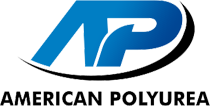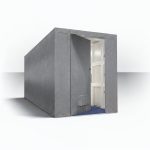In the world of transportation and logistics, most attention is focused on the cargo itself. Packages, pallets, and containers all receive careful handling, yet the equipment that holds and separates those loads often goes unnoticed. Dunnage, whether in the form of racks, blocks, cradles, or supports, is subjected to constant stress from weight and movement. It prevents goods from shifting, cushions impacts, and preserves the condition of both cargo and vehicles. When left unprotected, however, dunnage suffers from wear that shortens its life and compromises safety. This is where the science of coatings comes in. By applying specialized protective layers, companies extend the service life of their dunnage while reducing risks during transport.
Dunnage as the hidden backbone of transport
Every shipment, whether by road, rail, sea, or air, relies on dunnage to remain stable. Forklifts scrape against it, chains tighten across it, and vibration from travel tests it at every seam. Over time, bare steel corrodes, untreated wood absorbs moisture, and plastics degrade under sunlight. The failure of dunnage can cause more than inconvenience. It leads to unstable loads, damaged products, and potential injuries. Because of this, the condition of dunnage is directly tied to the efficiency and safety of logistics. Yet replacing these components repeatedly increases costs and interrupts operations.
The obvious answer is to make dunnage last longer. Coatings serve this role by providing a barrier between the base material and the environment. They absorb impact, resist abrasion, and block moisture, thereby allowing the equipment to function as intended far beyond its untreated lifespan.
How coatings transform performance
Protective coatings are not new to industry, but recent advances in material science have changed what is possible. Polyurea-based systems, in particular, have proven well-suited for dunnage applications. When sprayed, polyurea bonds instantly to the substrate and cures into a seamless membrane. Unlike paints or tapes that peel or crack, polyurea coatings stretch and compress with the base material, remaining intact under stress.
The benefit of seamlessness cannot be overstated. Seams and joints are where coatings are typically prone to failure. A continuous layer eliminates those weak points. Once cured, the surface resists water, oil, and chemicals, all of which are common in shipping environments. Forklift blades may scrape the coating, but instead of chipping away, the material absorbs the impact and retains its form. In this way, coatings do not simply cover dunnage; they allow it to keep performing under the toughest conditions.
Practical advantages in daily operations
For operators, the benefits of coated dunnage appear every day. Loads remain stable because surfaces do not degrade into splinters or rust. Workers face fewer hazards when handling equipment that stays smooth and intact. Warehouses and transport yards reduce downtime associated with damaged supports. Over months and years, the extended service life translates directly into lower replacement costs.
Resources such as dunnage coatings provide more detail on how these systems are designed and where they are most effective. They highlight the importance of selecting coatings that are specifically formulated for industrial use, rather than general-purpose paints or finishes that cannot withstand constant abrasion.
Aligning with industry needs
The demand for stronger protective systems reflects broader trends in logistics. Global supply chains are under pressure to move more goods with fewer delays, meaning equipment cannot afford to fail unexpectedly. The move toward polyurea dunnage coatings demonstrates how industries adapt proven technologies from other fields. Originally used in infrastructure and defense, polyurea now protects the equipment that quietly ensures cargo reaches its destination intact.
This shift also underscores a cultural change in maintenance philosophy. Instead of waiting for equipment to fail and then replacing it, companies now look to prevention. By investing in protective coatings, they reduce unplanned downtime and maintain consistent operations. The logic is straightforward: preventing damage at the surface protects everything built upon it.
Looking forward
As transportation demands grow, the role of dunnage will continue to increase. Heavier loads, longer routes, and more varied environments will test equipment beyond its previous limits. The coatings industry will continue to refine materials that not only resist abrasion but also improve grip, reduce slippage, and add safety features. In this way, innovation in coatings parallels innovation in logistics itself.
The connection between material science and cargo protection might seem distant, but in practice, it is direct. A surface that holds under strain prevents accidents, preserves products, and supports the flow of commerce. By extending the life of dunnage, coatings indirectly safeguard every shipment they carry.
Conclusion
Dunnage may not attract attention, yet it remains essential to the success of transport and logistics. Its reliability depends on the surfaces that protect it from constant stress and exposure. Coatings—especially those based on polyurea—offer a proven way to extend durability, reduce costs, and enhance safety. They represent a shift toward prevention, a recognition that the best way to solve problems is to stop them before they start.
For companies managing supply chains, investing in dunnage coatings is not a matter of aesthetics but of function. It keeps goods stable, workers safe, and equipment in service. In a world where every issues of shipment, that quiet strength makes all the difference.






